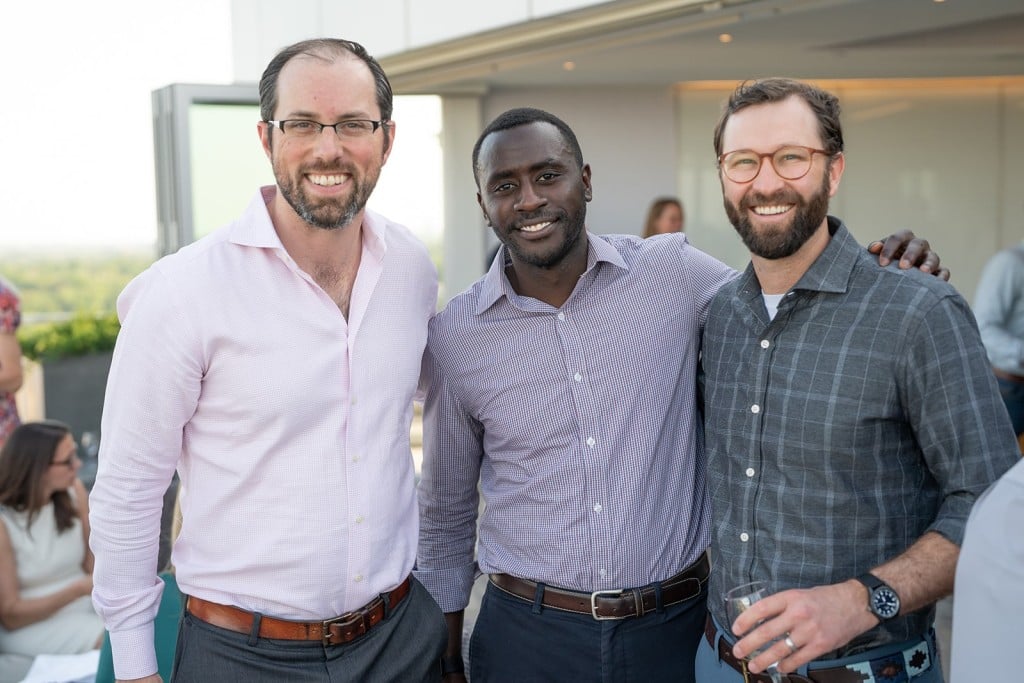Related Articles
As allocators increasingly overweight U.S. equities, we remind them that some of the best growth businesses lie outside the United States. These businesses provide differentiated growth potential, and can also help mitigate downside risk within a diversified portfolio.
This paper takes a top-down deep dive into allocators’ goals and challenges and describes why we believe active, concentrated management is the best solution when investing in non-U.S. equities.
Let’s address the elephant in the room. International equities have underperformed their U.S. counterparts for most of the last 20 years. Even with our long-term investment horizon at Sands Capital, that is a long time. So why do we find international businesses so interesting and exciting?
As active investors, we love a treasure hunt. The opportunity set in non-U.S. businesses is deep, diversified, and ripe with growth—you just need to know where to look. As today’s allocators and investors become increasingly overweight U.S. equities, we remind them that some of the best businesses are often international and can also help mitigate portfolio-level risk.

The Allocator’s Goal: Maximize Durable Returns with Prudent Diversification
Maximizing Durable Total Returns: The Importance of Earnings Growth
In our view, true long-term investors with a goal of creating durable investment results should focus primarily on earnings growth. While valuations matter, and can drive results over the short term, history has shown that the vast majority of total returns over the long term are driven by earnings growth rather than fluctuations in valuations.
Since 2002, earnings growth accounted for all global equity returns
MSCI ACWI - Total Return Decomposition
Fundamentals matter, and it is much easier to forecast a company’s earnings trajectory, in our view, than to time the market. We believe this creates opportunity for investors focused on the long term.
Prudent Diversification: The Importance of Global Allocation
At the end of the day, equities will be correlated with other equities during periods of market stress. However, what matters for long-term investors is their portfolios’ ability to bounce back from stress-induced drawdowns. Globally diversified portfolios have demonstrated shallower drawdowns and, on average, recovered faster than their locally invested counterparts.
Globally Diversified vs. Single-Country Portfolios
Global Diversification Has Historically Resulted in Downside Protection
The Allocator’s Problem: Where’s the Growth and Performance in non-U.S. Equities?
Growth Obscured by Index Construction
The international opportunity set is vast, and investors who dig deeper would find that a majority of the fastest-growing and best-performing businesses in the world are outside the United States. Our research suggests that over 75 percent of the fastest-growing MSCI ACWI constituents are found outside of the United States. Further, history shows that in each of the last 10 calendar years, most of the world’s 50 best-performing stocks were found outside of the United States.
The United States Doesn't Have a Monopoly on Growth
Percent of Top-50 Performing MSCI ACWI Constituents That Were Non-U.S.
Many U.S. investors don’t realize this, however, given that strong individual ex-U.S. stock performance has been diluted by ex-U.S. index construction. When what we consider the “best” is added to the “rest” of the international opportunity set, the result is uninspiring. Just under 20 percent of constituents in ex-U.S. benchmarks have compounded their earnings above 15 percent annually since 2008.
Indexes and Passive Management Miss the Growth
% Stocks Delivering > 15% EPS 5Yr CAGR: 2008 to 2023
Investors using index-tracking investment vehicles are missing the mark. In our view, passive or highly diluted portfolios are a blunt and poor tool to capitalize on the diversification and return opportunity in non-U.S. businesses.
The Home Bias Dilemma
It’s clear to us that the United States doesn’t have a monopoly on growth and innovation. However, many U.S. investors exhibit what behavioral economists call home bias, believing that the safest and best businesses are right outside their doorstep.
U.S. investors are now overweight U.S. equities by roughly a factor of three—the highest level since the great financial crisis of 2007 to 2008.
united states investors are overweight u.s. equities by the largest factor since the financial crisis
We can’t blame them given the recent outperformance of U.S. equities. But what’s driven this return differential?
Decomposing returns, a whopping nearly three-quarters of U.S. outperformance versus the MSCI EAFE index (a proxy for international equities) since 1990 was driven by valuation expansion.1 Because U.S. relative valuations more than tripled over this period, we believe relative returns of this magnitude could be due for a mean reversion or, at the very least, could be unsustainable going forward.
U.S. Equity Outperformance Has Relied Primarily on Valuation Expansion
Valuations of U.S. and Other Equity Markets, January 1980 to February 2023
The multiyear cyclical nature of global equity returns further suggests that this valuation-driven outperformance is vulnerable.
Over the last nearly 50 years, U.S. equities have outperformed over rolling five-year periods about 60 percent of the time – and history suggests the current period of U.S. outperformance may be getting long in the tooth.
We aren’t market timers or top-down investors, but this is an observation worth considering for allocators.
rolling 5-year excess returns - international equities vs. u.s. equities
1974 - 2023
The Allocators’ Solution: Active, Concentrated, Growth-Oriented Portfolios
To us, the solution is clear: apply deep domain experience to seek the non-U.S. businesses with the potential to deliver sustainable, above-average earnings growth across economic cycles. By seeking the crème de la crème in international markets, investors have the potential to enhance returns while reducing risk in their diversified portfolios.
We offer a range of global and non-U.S. growth equity solutions to fit your asset allocation needs underpinned by our concentrated long-term business owner’s philosophy and approach.
1 The Journal of Portfolio Management, International Diversification – Still Not Crazy after All These Years (Asness et al., 2023)
Disclosures:
The views expressed are the opinion of Sands Capital and are not intended as a forecast, a guarantee of future results, investment recommendations, or an offer to buy or sell any securities. The views expressed were current as of the date indicated and are subject to change.
This material may contain forward-looking statements, which are subject to uncertainty and contingencies outside of Sands Capital’s control. Readers should not place undue reliance upon these forward-looking statements. There is no guarantee that Sands Capital will meet its stated goals. Past performance is not indicative of future results. All investments are subject to market risk, including the possible loss of principal. Differences in account size, timing of transactions and market conditions prevailing at the time of investment may lead to different results, and clients may lose money. A company’s fundamentals or earnings growth is no guarantee that its share price will increase. You should not assume that any investment is or will be profitable.













